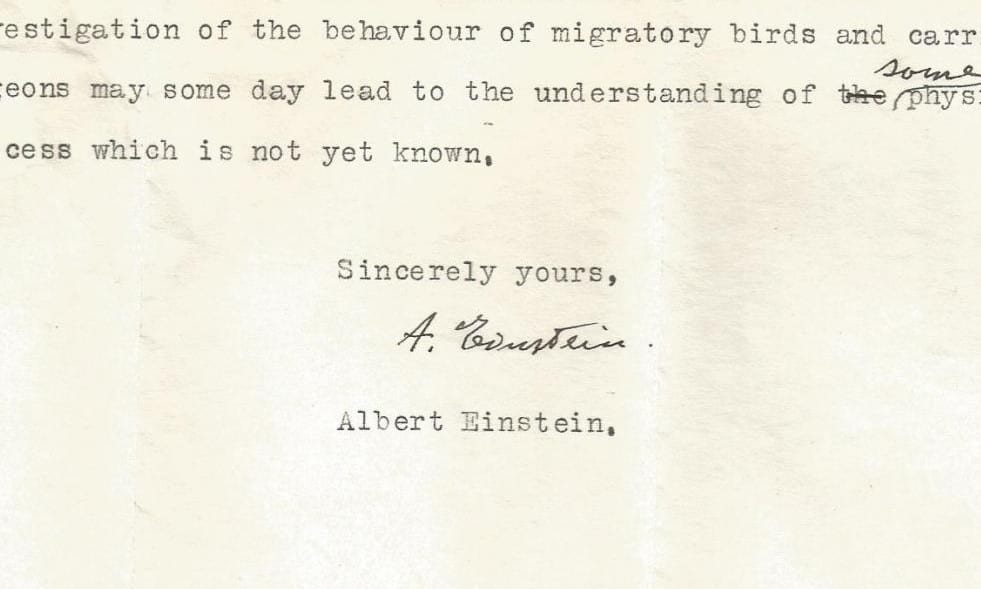A 1949 letter sent by Albert Einstein to the British radar researcher Glyn Davys shows that the great physicist believed new insights into physics could come from studying animal navigation. In the letter Einstein refers to being acquainted with the work of the German animal behaviour expert and future Nobel laureate Karl von Frisch, who discovered that bees navigate using polarized light.
Einstein and von Frisch are believed to have met in 1949, but nothing had been known of their private discussion. The previously unknown letter suggests that the pair talked about how there was much to learn about the physics underlying animal navigation. “It is thinkable that the investigation of the behaviour of migratory birds and carrier pigeons may someday lead to the understanding of some physical process which is not yet known,” Einstein wrote to Davys.
This was highly prescient because today we know that some birds navigate by detecting the Earth’s magnetic field. What is more, physicists believe that this detection relies on quantum entanglement – something that had long been thought impossible for living things.
Indeed, researchers are now trying to mimic this quantum sensory system to develop new technologies, as I discover in this podcast: “Quantum birds inspire new metrology for biosciences…”.
Such are the reputations of Einstein and von Frisch that a multidisciplinary group of researchers in Australia and Austria has written a paper about the letter, which is free to read in the Journal of Comparative Physiology A.
Arcs of circles
Making a good violin is notoriously difficult, being both an art and a science. Now, research led by two physicists – one a luthier and the other a mandolin player – have added another string to the violin maker’s bow by using artificial intelligence to predict the sound of a violin before it is built. Their inspiration came from an old drawing in the Museo del Violino in Cremona, Italy – which describes a violin’s outline as the conjunction of the arcs of nine circles.
By changing the parameters of these arcs as well as the thickness and mechanical characteristics of wood, the duo created a dataset of possible violins – some corresponding to existing instruments and others to purely fanciful creations. Advanced modelling was used to predict the sounds of the violins and all of this was input to an artificial neural network. Amazingly, the network was able to learn how a violin’s design affected its sound and could predict the sound of an instrument with an accuracy of nearly 98%.
The team says that the system could help in the design of instruments and the choices of wood used. They describe their results in the journal Scientific Reports.
